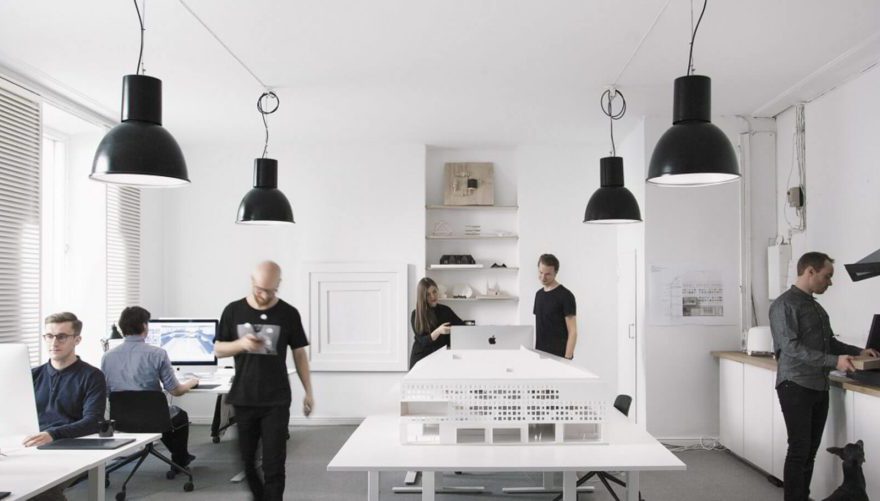How Architectural firms can garner excellent BIM Benefits?

Starting an Architectural Business Enterprise is a double-edged sword. Though it is a creative pursuit springing out of creativity and love for designing buildings, running it as a business is more than just following your passion. There are many twists and turn which include investment in the latest technology, construction systems, hiring, training etc., and is not everyone’s forte. If Architectural firms can imbibe the latest and smart technology systems while pursuing building designs, it can be a game changer. Building Information Modeling or BIM Services is one such technology. Virtual Construction Modeling provides an edge to the company by increasing the profitability, ROI and successful implementation of the construction projects. The involvement of BIM Modelling is quite possible right from the conceptual design stage and can continue through facility management. Today we will learn how Architectural firms can use virtual construction modeling in design processes.
1. Initially outsource BIM
Table of Contents
An Architect’s core forte is “Designing and developing Buildings”. There are various technologies and trends which are helpful in the overall design process. Architectural BIM Services is emerging strongly as one of the key technologies in the AEC and construction industry. However not a lot many firms are seeing it currently as prospective support owing to additional investment. Initially, it may seem like a liability as you may need to get trained, install software, upgrade high-end graphics cards and computers, hire Architects, etc. Hence to avoid these teething troubles it is wise to outsource BIM Services and get a feel of the operational advantages. Later when your Architectural firm is prepared to invest it can proceed ahead and have an in-house team for 3D modeling and other advanced features of Virtual Construction Modeling. Outsourcing is indeed a cost-effective proposition initially. Later after getting hands-on experience, your firm can garner the benefits of this technology by foraying into high-end technologies and branches BIM has to offer.
2. Innovative and automated processes
BIM Modelling is parametric in nature. This means that modifications made in a 3D environment can be automatically reflected in a 2D view. All connecting views or elements are changed automatically to suit the changes. This in turn saves a lot of time and effort taken to make design changes. This also increases the accuracy quotient as we do not have to make any changes manually hence the chance of missing any element is negligible. When we work with the Virtual Construction Modelling technology you get excellent flexibility in terms of design changes, and presentation through multiple options available in BIM software. We can render photorealistic images, extract 3D floor plans, develop Architectural Simulations, Colored elevations, 3D site views, and topography, etc. by adding an enticing visual effect to all the 3d work created. Previously when BIM Modelling was not used, there were endless communication issues during design changes that resulted in overbudgeting, increased timeline and construction issues. With the help of the collaborative approach of BIM Services project related communication is seamless. Getting all the Architects, Engineers, Subcontractors, Contractors and owner is not difficult. The design presentation in 3D view can help in the visualization of the virtual building and provide feedback amiably.
3. Accelerated feedback process
As discussed the overall design process is seamless and they are instrumental in streamlining the communication process too. Working with BIM Modelling or BIM coordination actually speeds up the feedback and implementation process. Since the Architects virtually construct the building digitally by providing real-time materials, textures, lighting, and photorealism. Since this is a virtual model in a real-time scenario providing and receiving feedback is also pretty much interactive. Any party provides feedback can be extremely useful during construction. All the necessary modifications can be made in the 3D model prior to construction. Providing multiple design options and 3D views can present design suggestions in a great way. This will also improve your saleability in the market as a progressive Architectural firm.
4. Ability to preserve building data
Apart from improved productivity, increased profit, and project efficiency one of the most positive impacts that Architectural BIM Services offer is “maintaining building data”. These models apart from visual 3D geometry also help in the data management of the entire building. Be it time schedule, materials, or quantities all this information is embedded in the 3D Model while being constructed virtually. This information and data-rich models produce accurate drawings and models both. This reduces onsite errors and helps in completing the project in a timely fashion. BIM Modelling helps Architects in meeting deadlines without compromising on quality and leaves time to play with creativity within the parameters of accuracy.
5. Architectural visualization using BIM
Architectural BIM Modeling also facilitates 3D rendering seamlessly. The model developed for the Building Information Modeling can be used for photorealistic rendering too. Later the same model can be transformed into an Architectural walkthrough or AR/VR with the technological advancement happening in the Architectural fraternity. The 3D modeling process converts the 2D plans or hand-drawn sketches into a virtual yet realistic model that can be used for marketing or sales purposes.
Conclusion: Architectural BIM Modelling is an excellent medium that bridges the gap between the design and construction process.